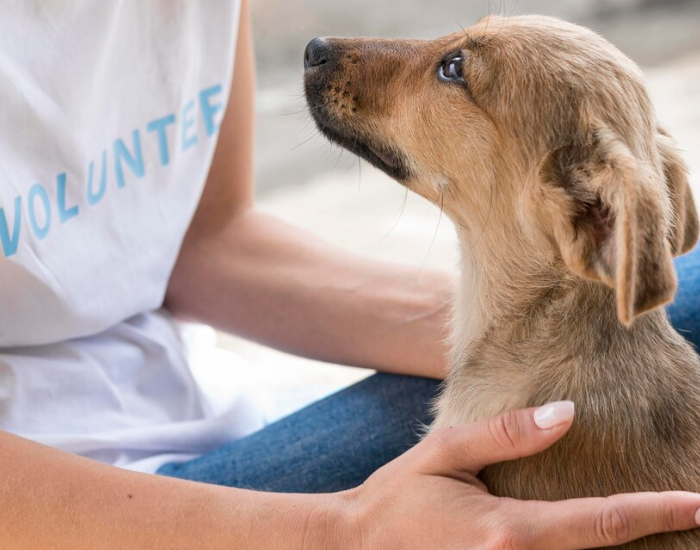Service dogs, often portrayed as heroes on four legs, are more than just pets; they are dedicated companions trained to perform specific tasks for individuals with disabilities. These tasks can range from guiding the visually impaired and alerting those with hearing impairments to providing assistance to people with mobility challenges or medical conditions. Service dogs are not defined by their breed but by their ability to aid and empower their handlers.
Service dogs play an indispensable role in enhancing the quality of life for people with disabilities. They offer not only practical assistance but also emotional support, independence, and a sense of security. These dogs are not only highly trained; they are also incredibly attuned to their handler's needs, making them exceptional partners in navigating the world.
Now, let's embark on our journey through the multifaceted world of service dog training, starting with the factors that influence the time it takes to train these remarkable animals.
Factors Influencing Training Time
The timeline for training a service dog can vary significantly. Multiple factors come into play, each contributing to the overall duration of the training process. Let's explore these influential factors.
Age and Breed
The age and breed of the dog are fundamental factors affecting the training timeline. Training typically commences when the dog is a puppy, usually between 2 and 12 weeks of age. Younger puppies are often easier to train because they are more adaptable and open to learning. However, the breed can also impact training. Some breeds are more naturally inclined toward service work due to their temperament and characteristics.
Task Complexity
The complexity of the tasks the service dog needs to perform is another critical consideration. Some tasks, such as providing emotional support or companionship, are less complex and may require less training time. In contrast, dogs trained for tasks like guiding the visually impaired or responding to medical emergencies may need more extensive training due to the intricacy of their duties.
Consistency and Intensity
Consistency and the intensity of training sessions are vital to a dog's progress. Dogs that receive regular, focused training sessions tend to learn faster. Training intensity refers to the level of focus and effort dedicated to each session. Dogs that undergo highly concentrated training may advance more quickly.
Handler's Experience
The handler's experience in training and handling dogs can significantly affect the training timeline. Handlers with prior experience may have a better understanding of training techniques and canine behavior, potentially expediting the process. Conversely, novice handlers may require more time to learn effective training methods.
Temperament
A dog's temperament plays a pivotal role in service dog training. Some breeds and individual dogs possess temperament traits that make them naturally suited for service work. These traits include calmness, attentiveness, and a strong desire to please. Dogs with these qualities may progress more quickly in training.
Specialized Tasks
Service dogs trained for specialized tasks, such as detecting seizures, allergens, or changes in blood sugar levels, often require longer training periods. These tasks demand a high level of precision and reliability, necessitating extended training to ensure the dog can perform them accurately and consistently.
Socialization
Proper socialization is a critical aspect of service dog training. Socialization involves exposing the dog to various environments, people, and situations. While essential for a well-rounded service dog, the process can add several months to the training timeline. It ensures that the dog remains calm and confident in diverse settings.
Legal Standards
Legal standards and requirements for service dogs can vary by location. Compliance with these standards is crucial. In the United States, for example, the Americans with Disabilities Act (ADA) sets specific guidelines for service dogs. Meeting these standards can extend the training period as additional skills and behaviors may be necessary to adhere to legal requirements.
Ongoing Training
Even after the initial training is complete, service dogs require ongoing training and reinforcement. This training continues throughout their working life to maintain their skills and adapt to changing needs. Ongoing training ensures that the dog remains proficient in performing tasks and behaves appropriately in various situations.
Individual Variability
Every dog is unique, and some dogs may progress faster or slower than others, regardless of breed or age. Individual variability, including factors like the dog's health and personality, can influence the training timeline. Patience and adaptability are essential when working with dogs, as their progress may not always follow a predictable pattern.
With an understanding of the factors that influence training time, let's delve into the specific stages of the service dog training journey.
The Training Timeline
Service dog training is a journey that unfolds in distinct stages. Each stage builds upon the previous one, gradually shaping the dog into a proficient service animal. Here's a closer look at the typical training timeline:
Puppyhood: The Foundation (2-12 Weeks)
Service dog training often begins when the dog is still a puppy, usually between 2 and 12 weeks of age. This early stage focuses on establishing a solid foundation of basic obedience and socialization. Puppies learn fundamental commands like sit, stay, and come. They also become accustomed to various environments, people, and experiences.
During this phase, positive reinforcement techniques are employed, using treats, praise, and toys to reward desired behaviors. The goal is to create a positive association between obedience and rewards, making learning an enjoyable experience for the puppy.
Early Training: Building Basics (3-6 Months)
As the puppy matures, training intensifies. Between 3 and 6 months of age, the dog continues to refine basic obedience skills while also learning more advanced commands. Additionally, the puppy begins to adapt to a harness or vest, a crucial step in preparing for its future role as a service dog.
Socialization remains a priority during this stage. The dog is exposed to a wide range of environments, including crowded public places, to ensure it remains calm and focused in diverse settings. Early exposure to various stimuli helps prevent fear or anxiety reactions in the future.
Specialized Training: Task-Specific Skills (6-12 Months)
Around 6 to 12 months of age, service dogs begin specialized training tailored to the tasks they will perform. This phase varies significantly depending on the dog's intended role. For example:
• Guide Dogs receive intensive training to navigate obstacles, respond to commands, and safely guide individuals with visual impairments.
• Hearing Dogs learn to respond to specific sounds, such as doorbells or alarms, and alert individuals with hearing impairments.
• Mobility Assistance Dogs are trained to retrieve items, open doors, and provide physical support to those with mobility challenges.
• Medical Alert Dogs develop the ability to detect changes in their handler's health, such as drops in blood sugar or impending seizures.
During this stage, trainers focus on honing the dog's task-specific skills. They use positive reinforcement and repetition to ensure the dog can perform these tasks reliably and consistently.
Advanced Training: Real-World Simulations (12-18 Months)
Advanced training, typically occurring between 12 and 18 months, exposes the service dog to real-world simulations. These simulations mimic the environments and situations the dog will encounter while working with its handler. Training may include navigating through busy streets, using public transportation, and entering various public establishments.
The dog is expected to maintain focus and execute tasks flawlessly, even in distracting or challenging circumstances. For instance, a guide dog must safely guide its handler through bustling city streets, while a medical alert dog should accurately detect changes in the handler's condition regardless of the surroundings.
Graduation: Ready for Service (18-24 Months)
The culmination of the training journey occurs when the dog reaches 18 to 24 months of age. At this point, the dog should be proficient in its assigned tasks and capable of providing assistance to its handler effectively.
Graduation involves rigorous assessments and evaluations to ensure the dog meets the necessary standards for service work. Once certified, the dog is ready to embark on its mission of providing essential support and companionship to its handler.
The Role of Professional Trainers
While some individuals choose to train their own service dogs, many enlist the expertise of professional trainers and organizations specializing in service dog training. These professionals have the knowledge and experience to navigate the complexities of training and ensure that dogs meet the required standards.
Finding the Right Trainer
Finding the right trainer or training organization is a crucial step in the service dog training process. It's essential to select a trainer who understands the specific needs of individuals with disabilities and has a track record of successful service dog placements. Recommendations from healthcare providers, service dog organizations, or individuals who have previously obtained service dogs can be valuable in the search for a reputable trainer.
Training Programs
Service dog training programs offered by professional trainers and organizations vary in duration and approach. Some programs provide intensive, full-time training for several months, while others offer part-time training with periodic check-ins. The choice of program depends on factors such as the dog's age, the tasks it needs to perform, and the handler's preferences.
Trainers work closely with both the dog and the handler to ensure a strong bond and effective communication. They use positive reinforcement techniques, patience, and expertise to shape the dog into a reliable service animal.
Legal Considerations
Understanding the legal aspects of service dog ownership is essential. In the United States, the Americans with Disabilities Act (ADA) defines the rights and responsibilities of service dog handlers and businesses. Under the ADA:
- Service dogs are defined as dogs individually trained to do work or perform tasks for people with disabilities.
- Businesses and organizations must allow service dogs to accompany individuals with disabilities in all areas open to the public.
- Handlers are not required to disclose their disability or provide documentation of their dog's training.
It's important for service dog handlers to be aware of their rights and responsibilities under the ADA. Additionally, some states may have additional laws related to service dogs, so it's advisable to research state-specific regulations if applicable.
The Journey Continues
Once a service dog completes its initial training and begins working with its handler, the journey is far from over. Ongoing training and support are essential to maintain the dog's skills and adapt to changing needs.
The Importance of Ongoing Training
Ongoing training involves regular practice of tasks and commands to ensure that the dog remains proficient. It also includes exposure to various environments and situations to reinforce socialization and adaptability. Handlers play a crucial role in ongoing training by providing consistent reinforcement and opportunities for the dog to perform its tasks.
Retirement and Life After Service
Service dogs typically work for several years, depending on factors such as their health and the needs of their handler. When a service dog reaches retirement age or can no longer perform its duties, it's time to transition into a well-deserved retirement. During retirement, service dogs continue to live with their handlers, providing companionship and love in their golden years.
Frequently Asked Questions
Can Any Dog Become a Service Dog?
While any dog has the potential to become a service dog, not all dogs are suited to the role. Service dogs must possess specific temperament traits, including calmness, obedience, and a strong desire to please. Additionally, they must be able to perform tasks that mitigate their handler's disability.
Can I Train My Own Service Dog?
Yes, it is possible to train your own service dog, but it is a demanding and time-intensive process. Many individuals choose to work with professional trainers or organizations to ensure that their service dog meets the required standards.
What Tasks Can a Service Dog Perform?
Service dogs can perform a wide range of tasks, including but not limited to:
- Guiding individuals with visual impairments
- Alerting individuals with hearing impairments to sounds
- Retrieving items for individuals with mobility challenges
- Detecting changes in blood sugar levels or impending seizures
- Providing emotional support and companionship
The specific tasks a service dog is trained for depend on the handler's disability and needs.
How Do I Get a Service Dog?
Obtaining a service dog typically involves several steps, including:
1. Assessing your need for a service dog with a healthcare provider.
2. Finding a reputable trainer or organization specializing in service dog training.
3. Completing the training program and assessments.
4. Ensuring that your dog meets legal standards for service dogs.
5. Enjoying the support and companionship of your trained service dog.
Conclusion
Service dogs are more than remarkable companions; they are lifelines, offering independence, support, and unwavering assistance to individuals with disabilities. While the journey of training a service dog can be lengthy and challenging, the results are nothing short of extraordinary.
As we've explored in this comprehensive guide, the timeline for training a service dog varies depending on multiple factors, including the dog's age, breed, and the complexity of tasks it will perform. Whether you choose to work with a professional trainer or embark on the journey of training your own service dog, the bond that forms between handler and dog is a testament to the incredible partnership that defines the world of service dogs.
Changing lives one paw at a time, service dogs continue to inspire us with their unwavering dedication and compassion. As they stand by their handlers' sides, they remind us that, with the right support and a loyal friend, anything is possible.













